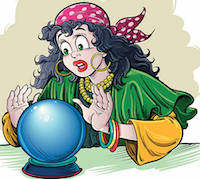Today’s question is who invented wine? Even employing my extensive research techniques, I couldn’t come up with a definite answer — but whoever is responsible deserves some kind of award. Wine has certainly become a part of lives. One of our friends gave us a coaster that reads, “A dinner without Wine is like a day without sunshine.”
Today — May 25th — is National Wine Day, at least in the United States. But a word of warning…. don’t confuse today with National Drink Wine Day — that’s celebrated on February 18th. Totally different than today.
My extensive research didn’t turn up any historically significant reason for today — but don’t let something like that stop you from celebrating.
Years ago, Gallo Wines did a lot of TV advertising and their ads featured the Gallo brothers, Ernest and Julio. The commercials always ended with Julio (or maybe Ernest) saying, “I like talking about wine, but I’d rather be drinking it.” Actually, I prefer drinking it too, but what the heck, let’s talk about wine…..
Wine is (maybe) about 8,000 years old. Most historians tend to agree that wine was discovered by accident. That’s probably why it is thought to come from the gods — it’s a natural product since it doesn’t have to be manipulated in the same way as beer or whiskey. Most any grape that falls from vines can eventually become wine — maybe not 90 points, but wine, nonetheless.
Wine production and wine trade were an important part of life and commerce in the Mediterranean by about 3100 BC. Back then wine wasn’t considered a drink for the masses —only royals and those in the Church drank wine when it first started to be produced (remember, it was considered a gift from the gods.) Everyone else was relegated to drinking beer.
My ER (extensive research) found that the first known wine bottle dates back to 325 AD. It was found in 1867 near a vineyard in Speyer, Germany. Today, a standard wine bottle holds 750 ml and most jurisdictions in the U.S. impose a tax by the gallon. Kentucky has the highest wine excise tax rate at $3.18 per gallon, followed by Alaska ($2.50,) Florida ($2.25,) Iowa ($1.75,) and New Mexico ($1.70.) The five states with the lowest wine excise rates are Louisiana ($0.11,) California ($0.20,) Texas ($0.20,) Wisconsin ($0.25,) and Kansas and New York (tied at $0.30.)
The growth of the wine industry exploded in Europe at the end of the Middle Ages. One reason was health related — in 1400, due to the Black Plague, which claimed more that half of Europe’s population, wine was considered safer to drink than water…. Claire still believes that today. (Don’t laugh — Claire may be on to something.) The famous scientist Louis Pasteur who studied micro-organisms and their effect of foods and beverages, seemed to confirm Claire’s theory, saying, “Wine can be considered with good reason as the most healthful and hygienic of all beverages.”
I mentioned that historians believe wine was discovered by accident. Obviously, a lot of “stories” go along with that theory, but my favorite is that a Persian princess who had fallen out of favor with the king decided to end it all by eating a jar of spoiled grapes. Instead of dying, she suddenly felt a lot better. The king liked her new happy attitude so much that he brought her back into his good graces. So today is a day of celebration of wine…. after signing the Declaration of Independence, our forefathers toasted each other with glasses of Madeira — let’s keep their tradition going — Happy National Wine Day!!
— 30 —


